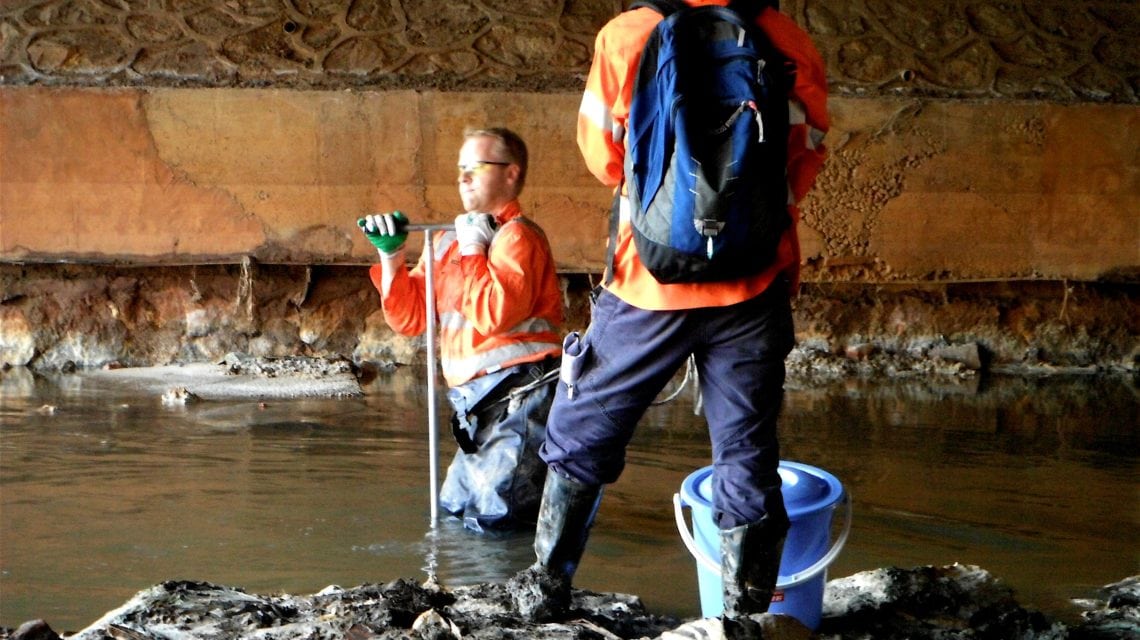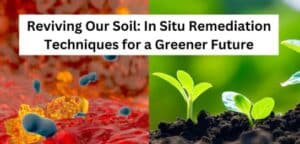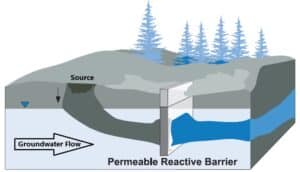Effective Soil Remediation Techniques
Effective soil and groundwater remediation strategies are essential for safeguarding human health and the environment, especially in regions impacted by industrial pollution. Discover the secrets to restoring our planet’s soil and water—before it’s too late!
In Situ Remediation Technologies
In situ remediation involves treating the contaminated soil without removing it from its original location. This approach is often cost-effective and less disruptive.
- Air Sparging: This technique injects air into the contaminated groundwater to volatilize and remove pollutants. It’s effective for volatile organic compounds (VOCs) and certain petroleum products.
- Soil Vapor Extraction: Similar to air sparging, this method involves extracting volatile contaminants from the soil via vacuum pumps.
- Bioventing: Utilizes microorganisms to degrade organic pollutants in the soil. It’s a form of bioremediation that targets the unsaturated soil zone.
- Chemical Oxidation: Involves the injection of chemical oxidants into the soil to transform harmful contaminants into less hazardous substances.
- Electrokinetic Remediation: Uses electrical currents to mobilize contaminants, especially useful for soils with low permeability.
- Phytoremediation: Employs plants to absorb or degrade contaminants. This method is particularly effective for surface contamination and can improve the site aesthetically.
- Enhanced Bioremediation: Introduces nutrients or oxygen to stimulate the natural biodegradation processes in the soil.
- Thermal Treatment: Applies heat in situ to volatilize and remove contaminants. This method is effective for a wide range of organic compounds.
Ex Situ Remediation Technologies
Ex situ remediation involves excavating contaminated soils and treating them off-site. This method is suitable for sites with high levels of contamination or where in situ treatments are not feasible. Techniques include:
- Soil Washing: Uses water, sometimes with chemical additives, to wash away contaminants from the soil particles.
- Thermal Desorption: Heats the soil to vaporize contaminants, which are then condensed and collected for treatment or disposal.
- Solidification and Stabilization: Involves mixing the soil with binding agents to immobilize contaminants, preventing them from leaching into groundwater.
- Landfarming: Spreads contaminated soil over a large area and periodically tills it to aerate and enhance biodegradation.
- Composting: Utilizes organic materials to facilitate the biodegradation of organic contaminants in the soil.
- Encapsulation: Involves surrounding the contaminated soil with a physical barrier to prevent the spread of contaminants.
- Chemical Reduction: Applies reducing agents to transform hazardous contaminants into less toxic forms.
Groundwater Remediation Technologies
Groundwater remediation is critical for protecting water resources and ensuring public health. Various technologies are employed to address groundwater contamination, each with its unique mechanism and suitability for different types of pollutants.
Phytoremediation
Phytoremediation uses plants to absorb or break down pollutants in soil and groundwater. It’s a natural, cost-effective method, though it can be slow and is dependent on plant growth rates and the depth of the groundwater.
- Hydraulic Control: Plants, especially deep-rooted ones, help in controlling the hydraulic flow of groundwater, containing the spread of contamination.
- Rhizofiltration: Involves the use of plant roots to absorb and concentrate contaminants from groundwater.
- Phytoextraction: Certain plants can absorb contaminants from groundwater and accumulate them in their tissues, which are then harvested and disposed of safely.
- Phytostabilization: Plants stabilize contaminants in the groundwater by binding them in the root zone, preventing further migration.
- Phytodegradation: Some plants can actually degrade organic pollutants within their tissues, effectively removing them from the groundwater.
- Phytovolatilization: Certain plants can take up water containing contaminants and release them into the air through transpiration.
- Constructed Wetlands: Artificial wetlands are designed to use natural processes involving wetland vegetation, soils, and their associated microbial assemblages to assist in treating contaminated groundwater.
Bioremediation
Bioremediation employs microorganisms to degrade organic pollutants in soil and groundwater. It’s effective for a range of contaminants and can be implemented in situ, making it a minimally invasive and cost-effective option.
- Bioaugmentation: Involves adding specific strains of bacteria that are effective at degrading certain pollutants.
- Biosparging: Injecting air under pressure below the water table to increase groundwater oxygen concentrations and enhance the biodegradation of contaminants.
- Bioventing: Similar to biosparging, but targets the unsaturated zone above the water table.
- Bioslurping: Combines vacuum-enhanced pumping with bioventing to recover free-floating product on the water table.
- Biopiles: Involves excavating impacted soil, forming it into a pile, and stimulating aerobic microbial activity within the soils through the addition of nutrients and air.
- Bioattenuation: Relies on natural attenuation processes to reduce the concentration or toxicity of contaminants in groundwater.
- Anaerobic Bioremediation: Utilizes microorganisms that thrive in environments without oxygen to degrade contaminants.
Permeable Reactive Barriers
Permeable Reactive Barriers (PRBs) are installed underground to intercept and treat contaminated groundwater. As groundwater flows through the barrier, contaminants are removed or neutralized. This method is effective for long-term remediation and minimizes surface disruption.
- Zero-Valent Iron (ZVI) Barriers: Utilize iron filings to reduce and remove contaminants, particularly effective for chlorinated solvents and heavy metals.
- Activated Carbon Barriers: Use activated carbon to adsorb organic contaminants from groundwater.
- Biological Barriers: Incorporate microorganisms to biodegrade organic pollutants as groundwater passes through.
- Oxygen-Release Compound Barriers: Introduce oxygen to stimulate aerobic biodegradation of organic contaminants.
- Chemical Precipitation Barriers: Employ agents that react with contaminants to form insoluble compounds, thereby removing them from the groundwater.
- Phosphate Barriers: Specifically target heavy metals, trapping them as insoluble phosphate minerals.
- Sulfur-Modified Iron Barriers: Combine iron and sulfur to enhance the removal of specific contaminants like arsenic.
- Chelating Agent Barriers: Use agents that bind with heavy metals, facilitating their removal from groundwater.
Innovative Remediation Technologies
In addition to traditional methods, there are innovative technologies emerging in the field of soil and groundwater remediation.
-
- Electrokinetic Remediation: Uses electrical currents to mobilize and remove contaminants.
- Thermal Remediation: Involves heating the soil or groundwater to volatilize contaminants for removal.
- Chemical Oxidation: Involves injecting chemical oxidants to transform harmful contaminants into less hazardous substances.
- Nanoremediation: Involves the use of nanoparticles to target and break down contaminants at the molecular level.
- Laser-Induced Fluorescence: A diagnostic tool that helps in identifying and quantifying specific contaminants, improving the efficiency of remediation efforts.
- Surfactant-Enhanced Remediation: Uses surfactants to increase the solubility and mobility of hydrophobic contaminants, making them easier to remove.
- Mycoremediation: Employs fungi to degrade or immobilize contaminants in the soil and water.
- Fracturing Techniques: Improve the permeability of soils, facilitating the delivery of remediation agents to contaminated zones.
- Membrane Technology: Utilizes semi-permeable membranes to separate contaminants from water, effective in treating a wide range of pollutants.
- Cryogenic Remediation: Involves freezing contaminated soil or water to immobilize and separate pollutants.
Navigating the Complexities of Soil and Groundwater Remediation
The remediation of soil and groundwater contaminants requires a strategic blend of traditional and innovative methods. At iEnvironmental Australia Pty Ltd, we understand that each contamination case varies in complexity, necessitating tailored solutions that address the specific type and extent of contamination, site characteristics, and budget considerations.
Our approach involves thorough site assessments to determine the most effective and cost-efficient remedial methods. We offer a diverse range of techniques, from in situ methods like bioremediation and air sparging to ex situ approaches such as soil washing and thermal desorption. Additionally, we incorporate advanced technologies like nanoremediation and mycoremediation for more complex contamination scenarios.
We prioritize sustainable and environmentally friendly practices in our remediation strategies, aiming to minimize ecological impact while ensuring effective contaminant removal.
Our philosophy is grounded in active collaboration with clients and communities, ensuring our strategies align with both technical needs and stakeholder expectations.
For those facing environmental contamination challenges, iEnvironmental Australia Pty Ltd offers expert consultation and innovative, cost-efficient remediation solutions. We invite you to engage with us, share this post, or reach out for more information on our services. Our commitment to excellence in soil and groundwater remediation positions us as a leader in environmental consulting.



